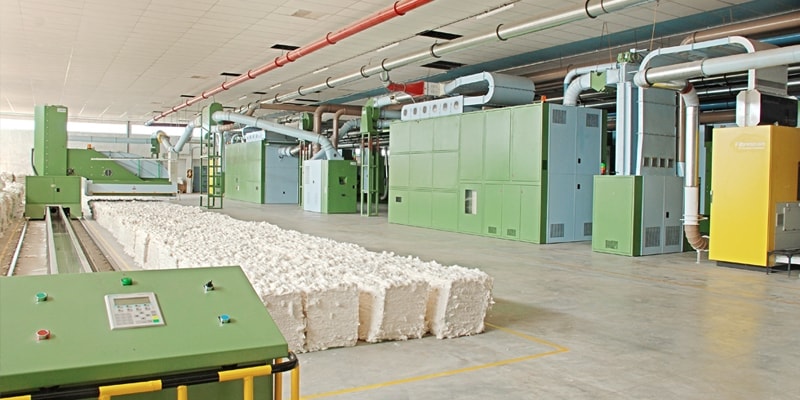Textile industry carries out immense complex processes right from preparing yarn which is a raw material for fabric to a variety of processes to produce finished fabric and after processes like fabric printing etc. Blowroom is one of the important operations in textile manufacturing. The blowroom carries out different processes to open and clean cotton and other fibers. There can be a sequence of machinery to do the job. If you want to know more about blowroom processes and machinery, this article reveals the various blowroom processes and machinery used to do it efficiently.
Blowroom Processes
Before going to the different machines used in blowroom processes, it is essential to know about various blowroom processes. The basic blowroom operations include –
- Opening the bales of fibers and making cotton tufts as small as possible.
- Cleaning the fiber removing all dirt, dust and waste materials from it.
- Blending and mixing is essential to improve yarn quality and reduce production cost.
- Removal of micro dust particles
- Feeding to the carding machine
- Waste recycling
Variety of Machines used in Blowroom
To carry out this line of operations, the sequence of different machines is necessary. However; the requirement of assembly in blowroom depends on many factors such as type and characteristics of raw material, type of waste and dirt content, number of different sources of material in a blend etc. The modern blowroom assembly consists of machines such as –
- Bale openers – The variety of bale openers machinery is available today. These machines can operate on a variety of raw materials like rayon, viscose and other man-made fibers including cotton.
- Pre-cleaners – The opening process is followed by cleaning of fibers. If higher degree of opening is achieved, higher the degree of cleaning is achieved. But higher cleaning effects result in more fiber loss. High roller speed offers better cleaning but puts more stress on the fiber. You will find a variety of pre-cleaners and cleaning machinery which offers gentle treatments and reduce fiber loss remarkably.
- Mixers – Plenty of mixers and blenders have been developed to give maximum blending and homogeneity to the mixing. This hoppers and chutes also acts as a storage/ reservoir of fibers.
- Storage and feeding machines – The three feeding equipment are commonly seen in blowroom. This equipment includes clamped feed roller, two feed roller and feed table with roller and pedals.
The modern blowroom machinery accompanies air streams to separate the trash from the fibers. There are many factors affecting the degree of cleaning, opening and fiber loss. Some of these factors include fiber coherence and alignment, degree of penetration, speed and type of opening device, air flow through grid, grid setting, thickness and density of feed web etc.
The line of this machinery has made it easy to couple different devices and carry out different processes to get fine clean fibers. This assembly gives optimum performance, increases speed and quality of the processes reducing fiber loss.
Common Faults in Blowroom:
- Neps formation.
- High variation and blowroom lap weight.
- Poor cleaning efficiency.
- Cotton not opened properly.
- Conical lap.
- Holes in the lap.
- Excessive lint loss.
Recent development of Blowroom line:
- Improved input action blendomat / uniflock.
- Optiscan.
- Electronic/Computer based system for each machine.
- Different new machines like CVT, CVT3, CLC1, CLC3, CL-U, SP-FPO,SP-FPU, TO-T1, TO-T3 and SP-EM etc.
- Better cleaning efficiency of special types of cylindrical saw toothed beater.
- Better suction and waste management system.
- Improved safety device.


